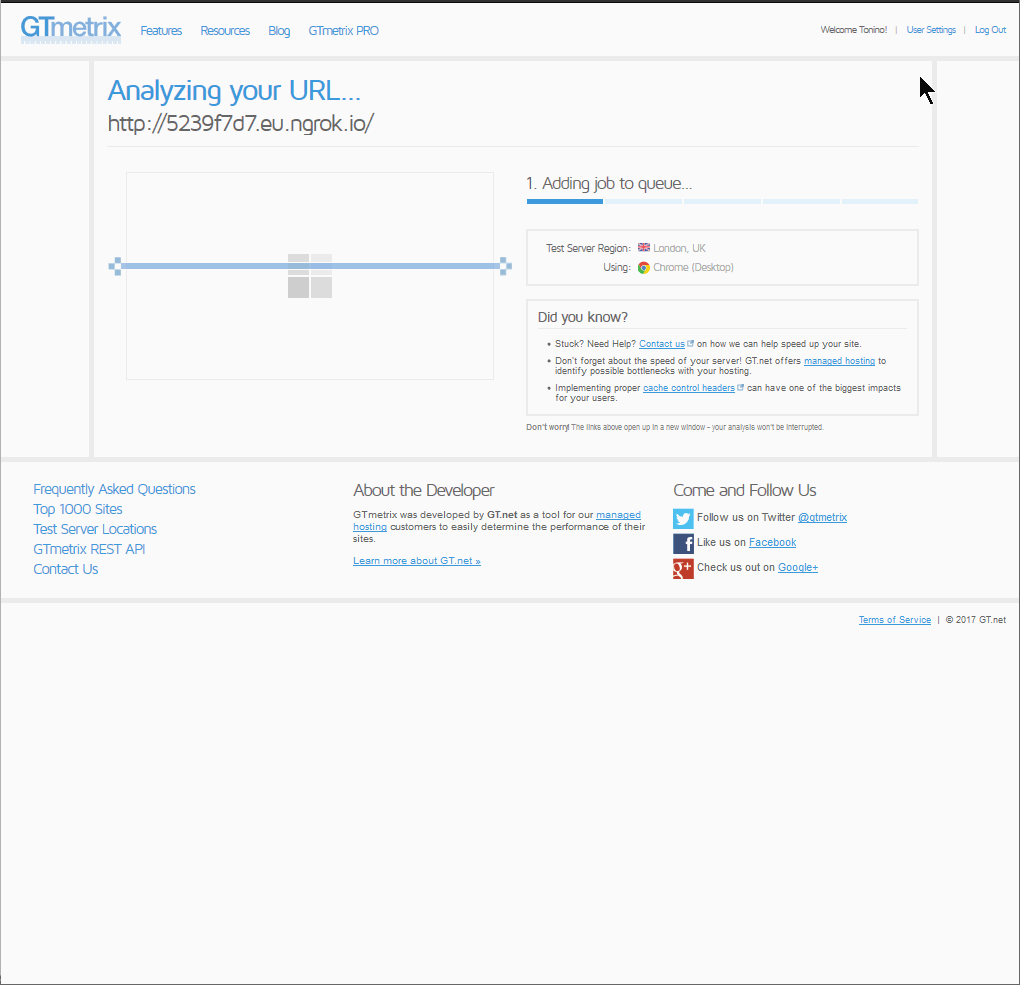This article is part of a series on building a sample application --- a multi-image gallery blog --- for performance benchmarking and optimizations. (View the repo here.)
In this article, we'll analyze our gallery application using the tools we explained in the previous guide, and we'll look at possible ways to further improve its performance.
As per the previous post, please set up Ngrok and pipe to the locally hosted app through it, or host the app on a demo server of your own. This static URL will enable us to test our app with external tools like GTmetrix and Pingdom Tools.

We went and scanned our website with GTmetrix to see how we can improve it. We see that results, albeit not catastrophically bad, still have room for improvement.
The first tab --- PageSpeed --- contains a list of recommendations by Google. The first item under the PageSpeed tab --- a warning about a consistent URL --- pertains to our application outputting the images randomly, so that is an item we will skip. The next thing we can do something about is browser caching.
Browser Caching

We see that there is a main.css file that needs its Expires headers set, and the images in the gallery need the same thing. Now, the first idea for these static files would be to set this in our Nginx configuration:
location ~* \.(?:ico|css|js|gif|jpe?g|png)$ {
expires 14d;
}
We can simply put this inside our server block and leave it to Nginx, right?
Well, not really. This will take care of our static files, like CSS, but the /raw images we are being warned about aren't really that static. So this snippet in our Nginx configuration won't exactly fix this issue so easily. For our images, we have an actual controller that creates these on the fly, so it would be ideal if we could set our response headers right there, in the controller. For some reason, these weren't being set properly by Glide.
Maybe we could set our Nginx directive in a way to include the raw resources, but we felt the controller approach to be more future-proof. This is because we aren't sure what other content may end up with an raw suffix eventually --- maybe some videos, or even audio files.
So, we opened /src/ImageController.php in our image gallery app, and dropped these two lines inside of our serveImageAction(), just before the line return $response:
// cache for 2 weeks
$response->setSharedMaxAge(1209600);
// (optional) set a custom Cache-Control directive
$response->headers->addCacheControlDirective('must-revalidate', true);
This will modify our dynamic image responses by adding the proper Cache Control and Expires headers.
Symfony has more comprehensive options for the caching of responses, as documented here.
Having restarted Nginx, we re-tested our app in GTmetrix, and lo and behold:

The post Improving Performance Perception with Pingdom and GTmetrix appeared first on SitePoint.
by Tonino Jankov via SitePoint
No comments:
Post a Comment